Abstract
1. Isometric contractions of kitten soleus and flexor hallucis longus (FHL) muscles have been examined for evidence of polyneuronal innervation. The sum of tetanic tensions of two almost equal divisions of the ventral roots was greater than the tetanic tension elicited by stimulating both the divisions simultaneously. The difference was large in kittens aged about 3 days, was less at 2 weeks and was small or absent at 6 weeks.
2. A tetanus elicited from one division of the ventral root potentiated a twitch elicited from the other root division. The time course of this potentiation was similar to that of post-tetanic potentiation induced from the same root from which the twitch was elicited.
3. It is concluded that polyneuronal innervation exists in the kitten limb muscles.
4. The observed degree of tension excess was less if the divisions of the root were not equal. The observations were compatible with a model which assumed a random distribution of nerve axons to the muscle fibres.
Full text
PDF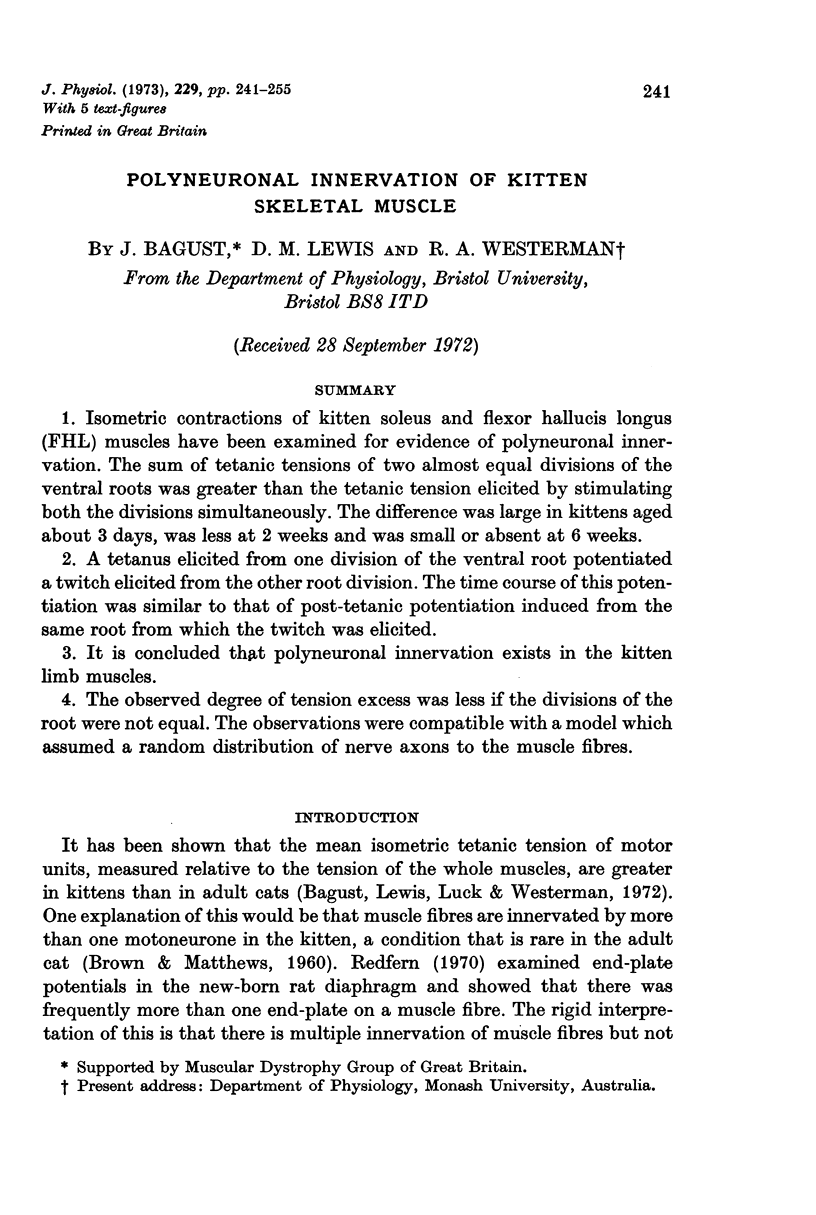
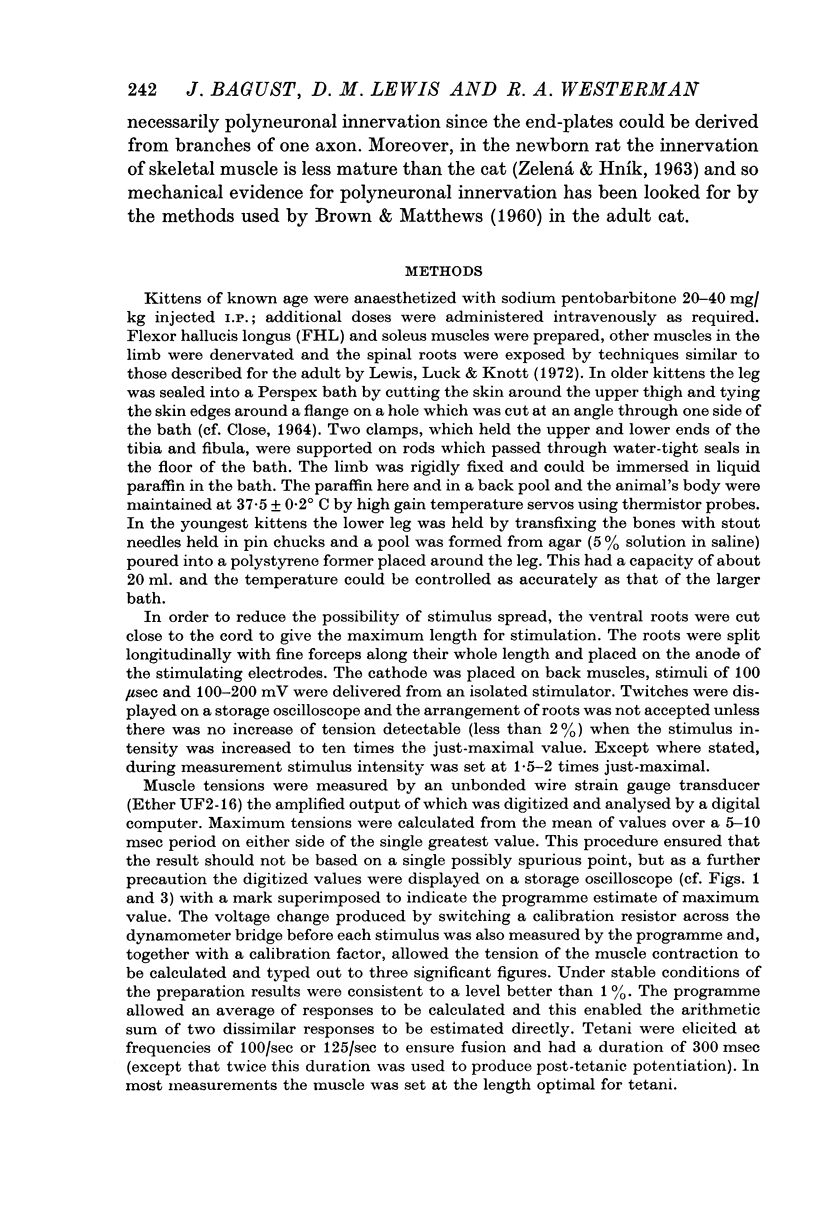
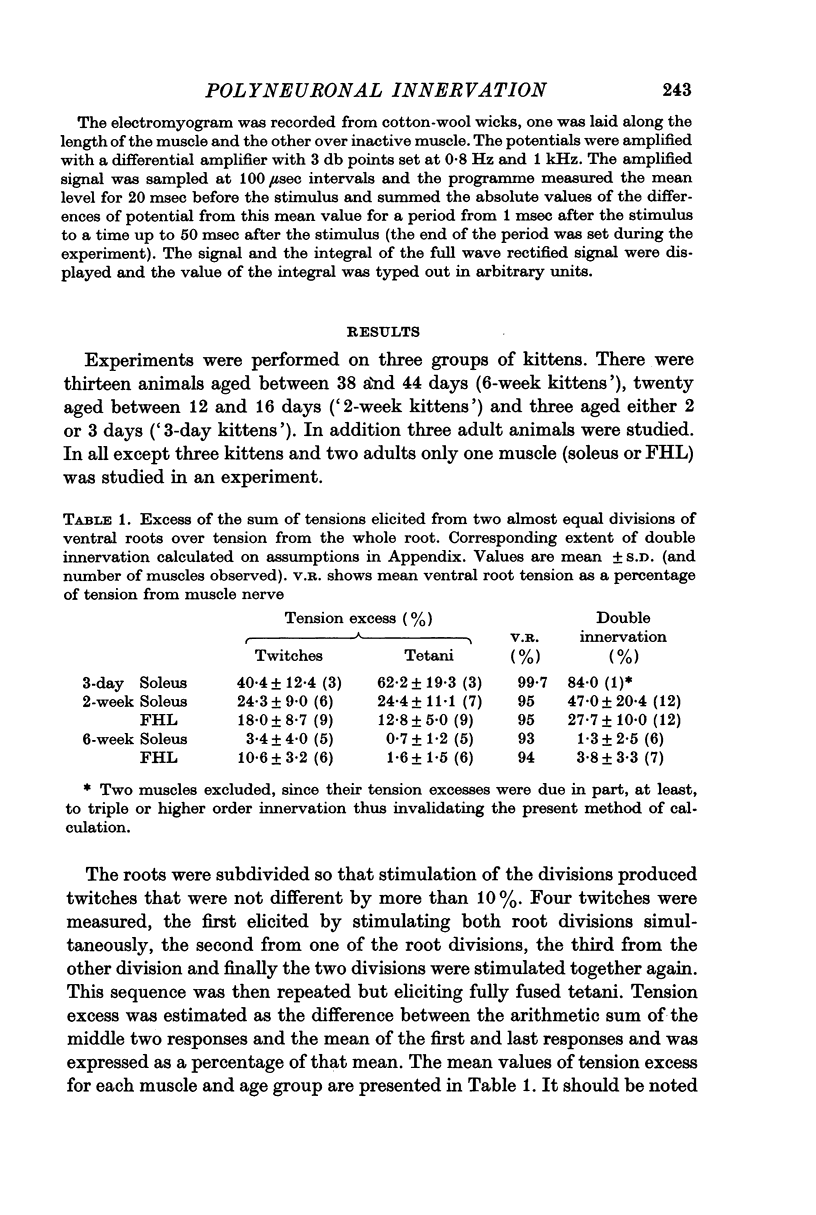
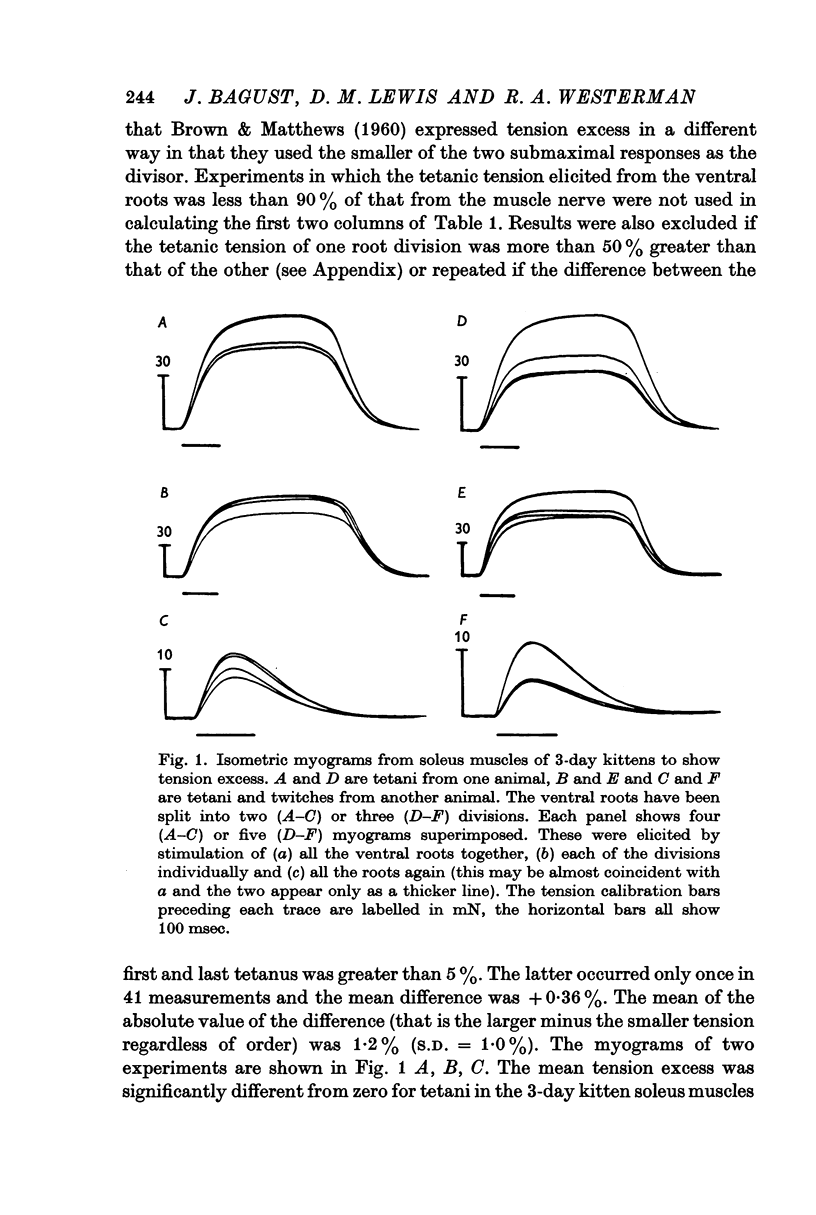
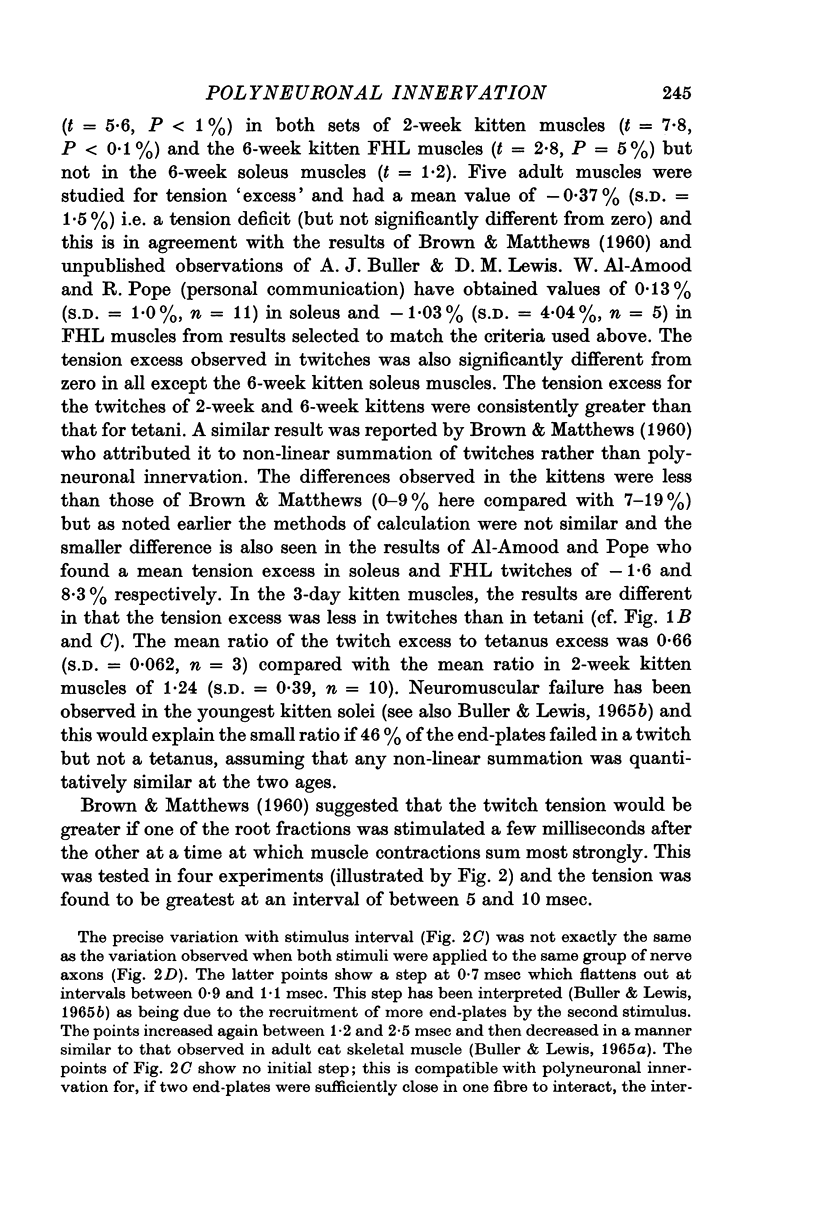
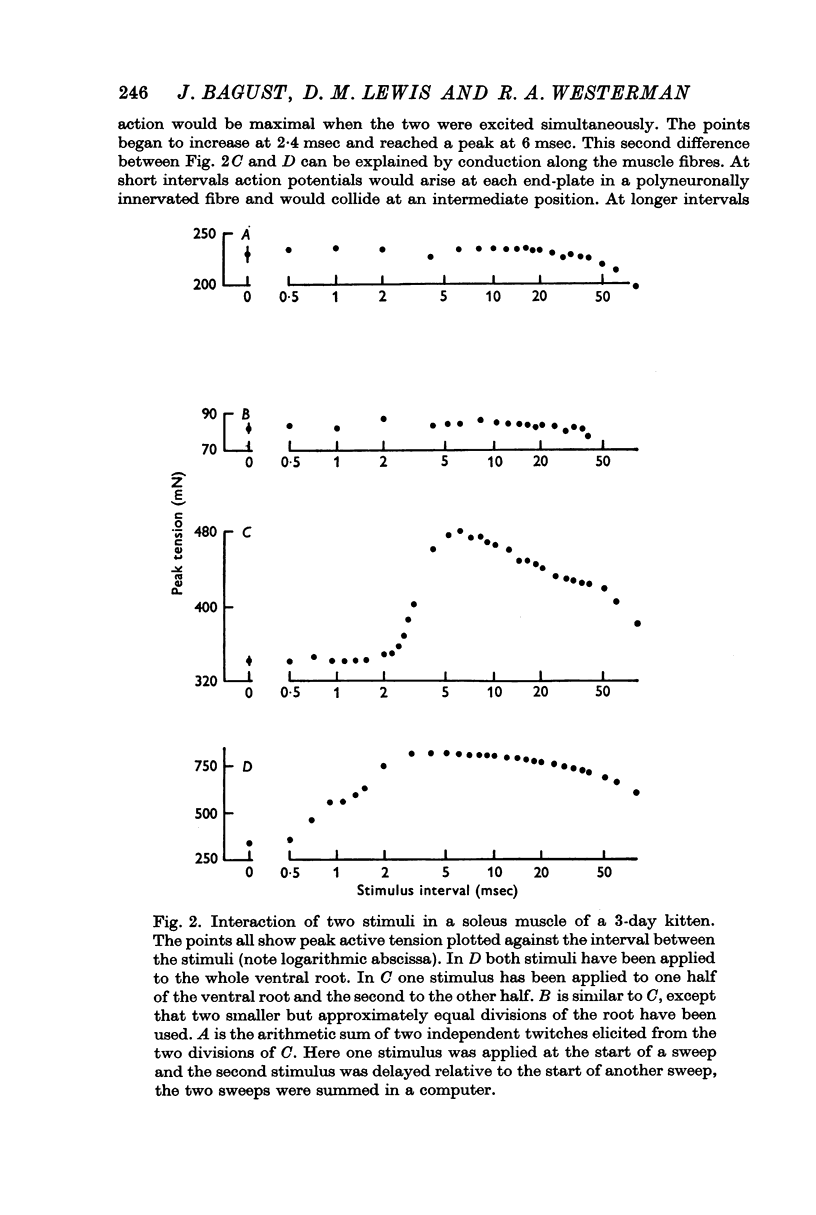
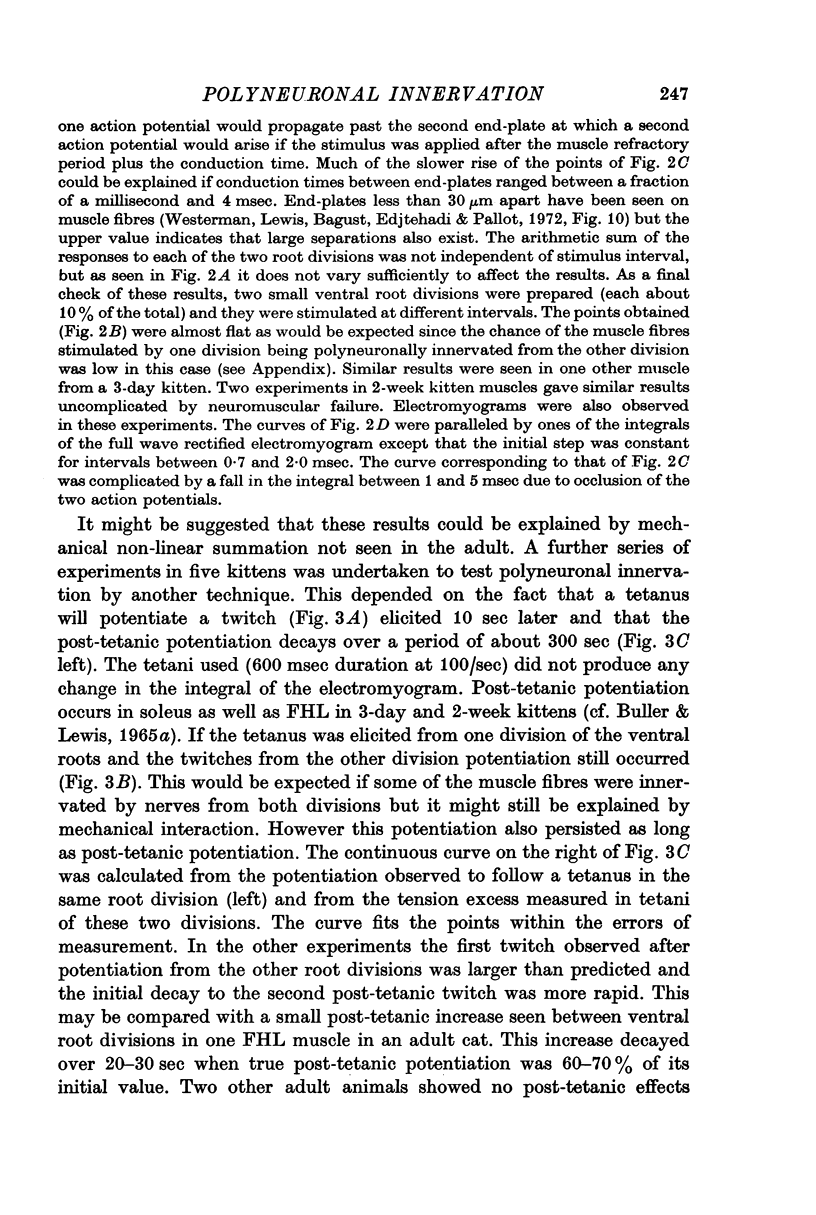
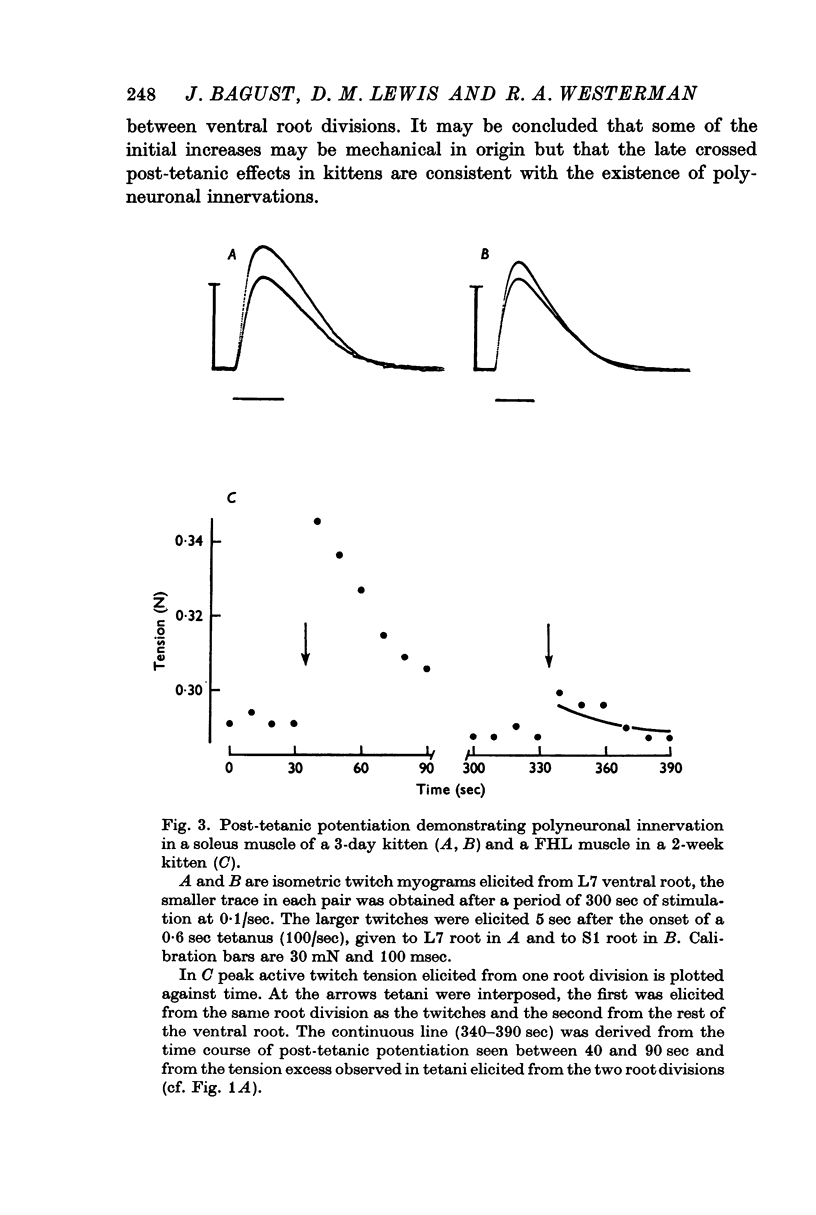
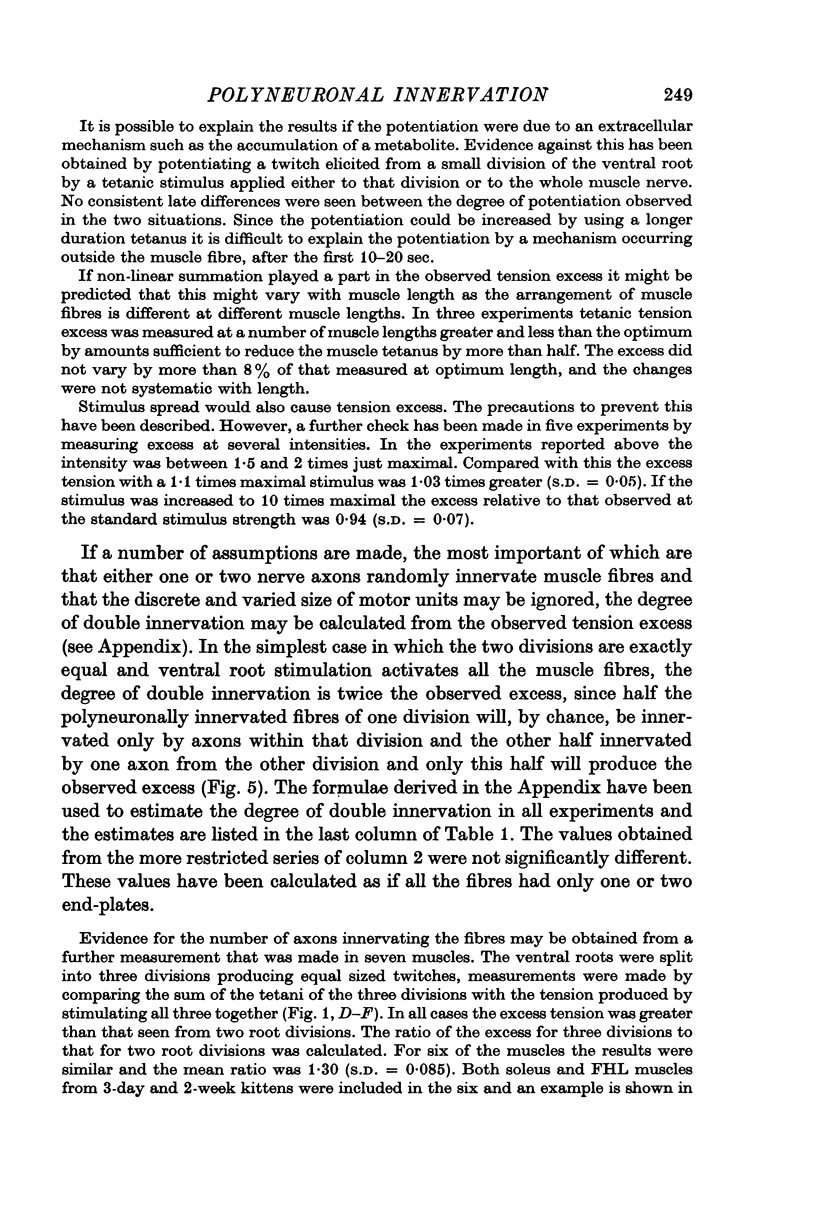
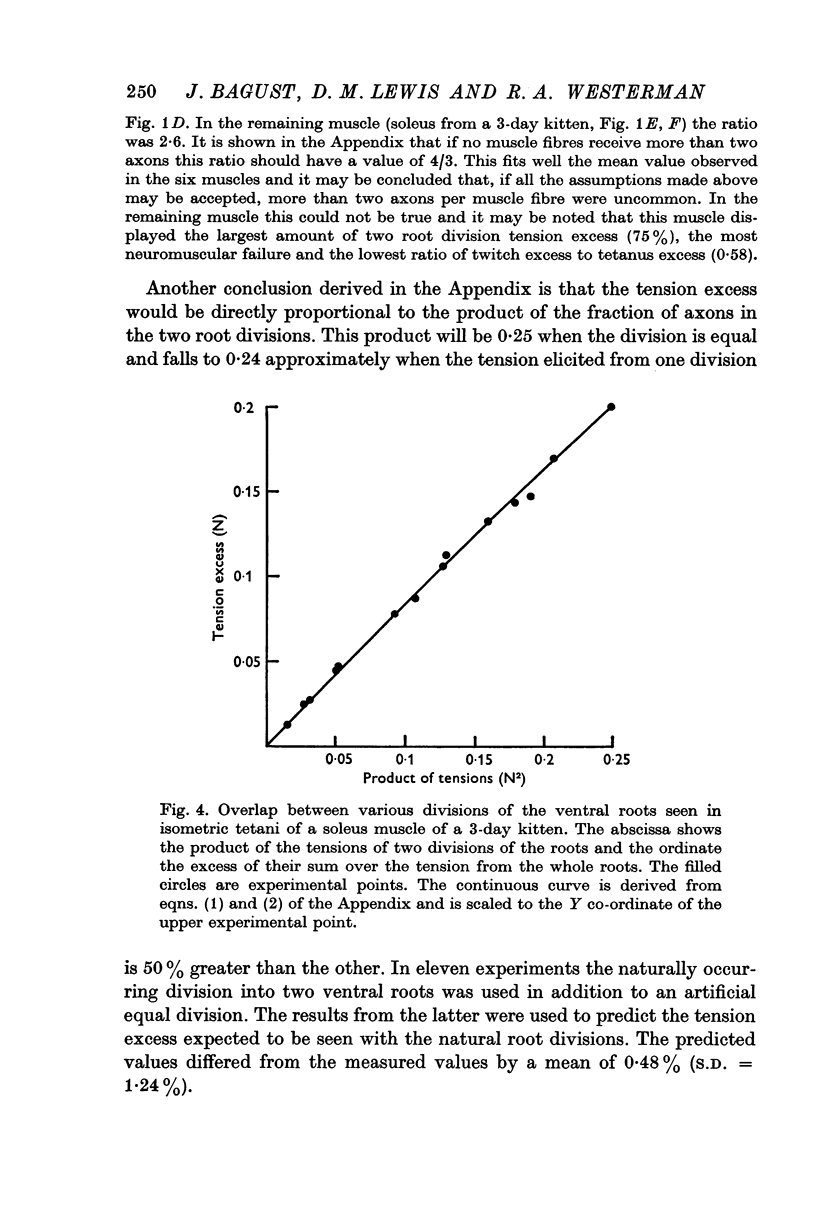
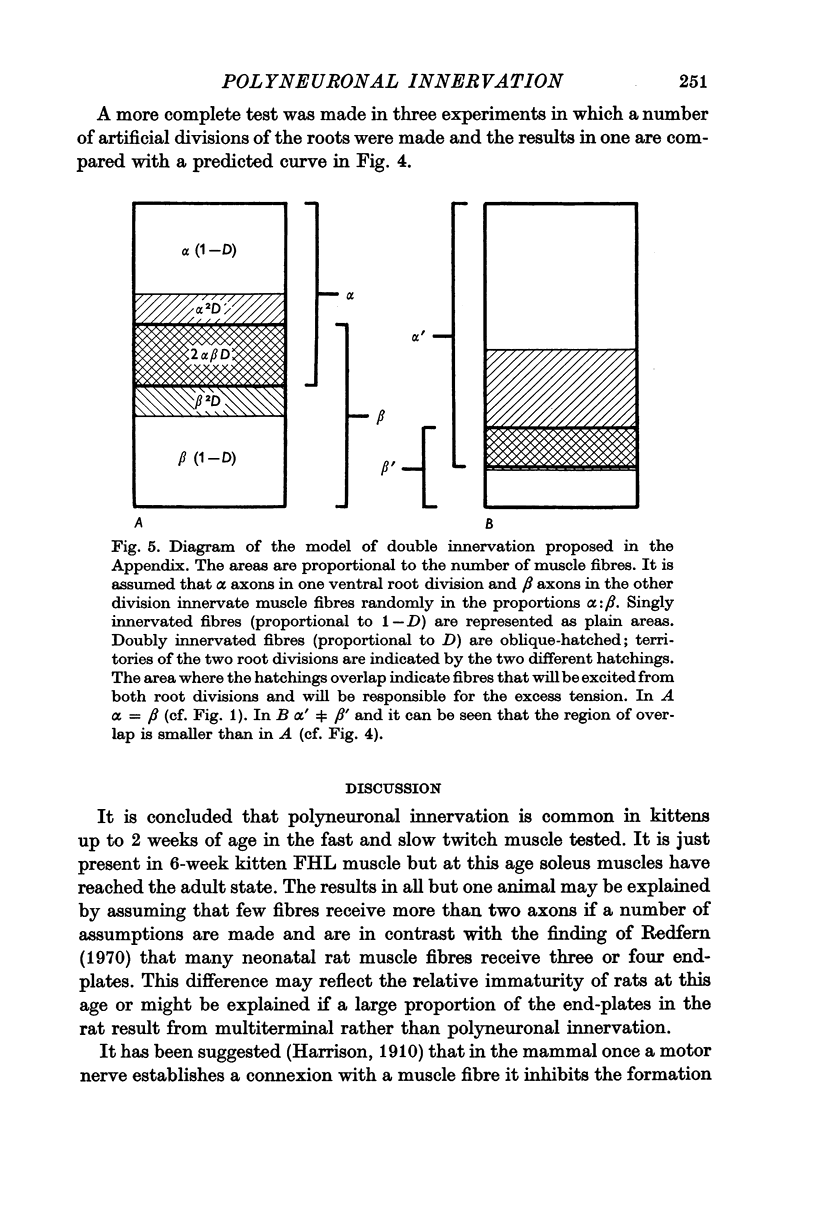
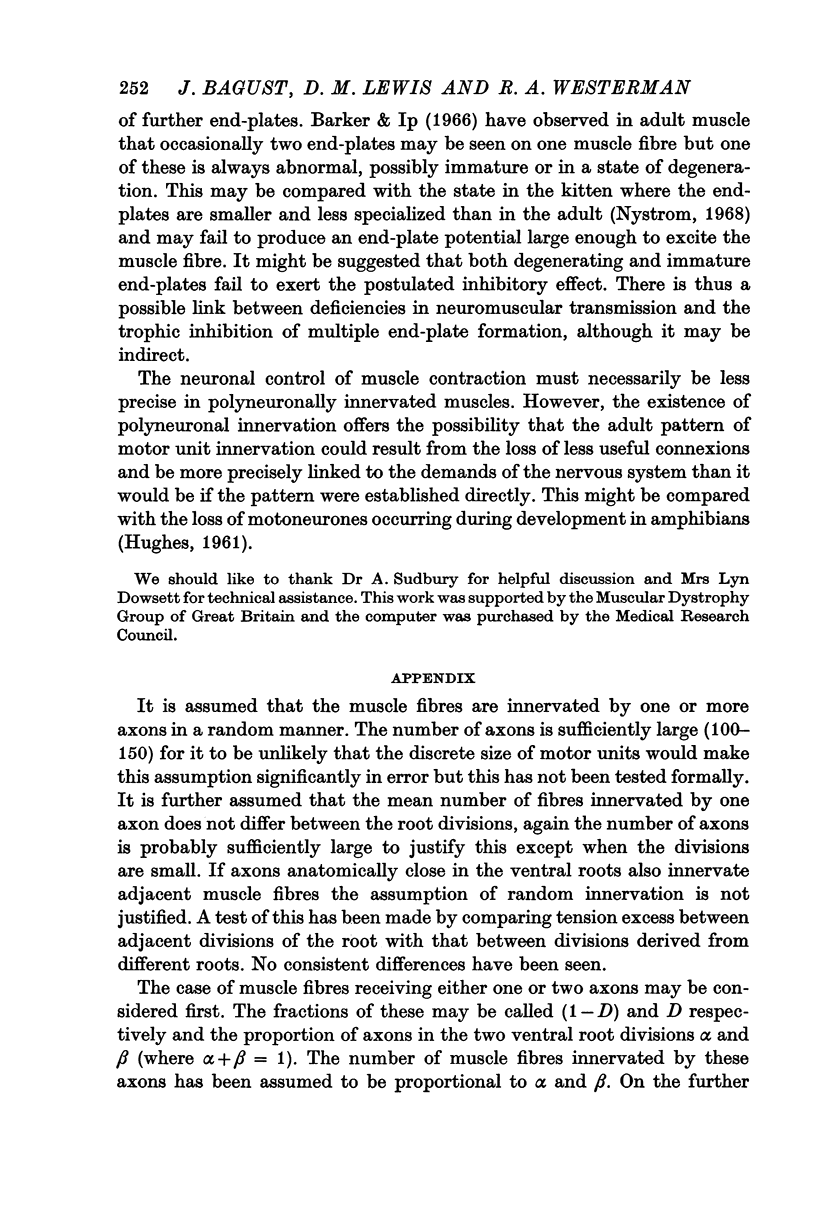
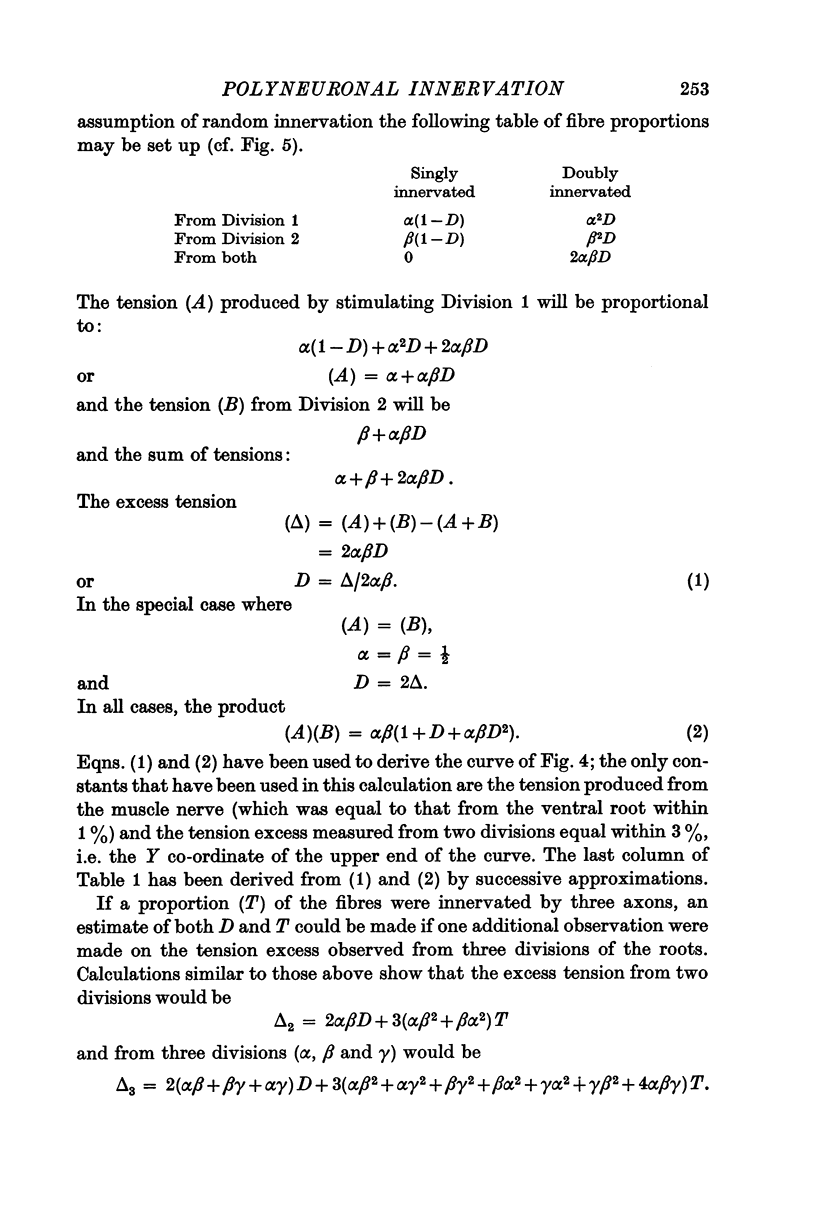
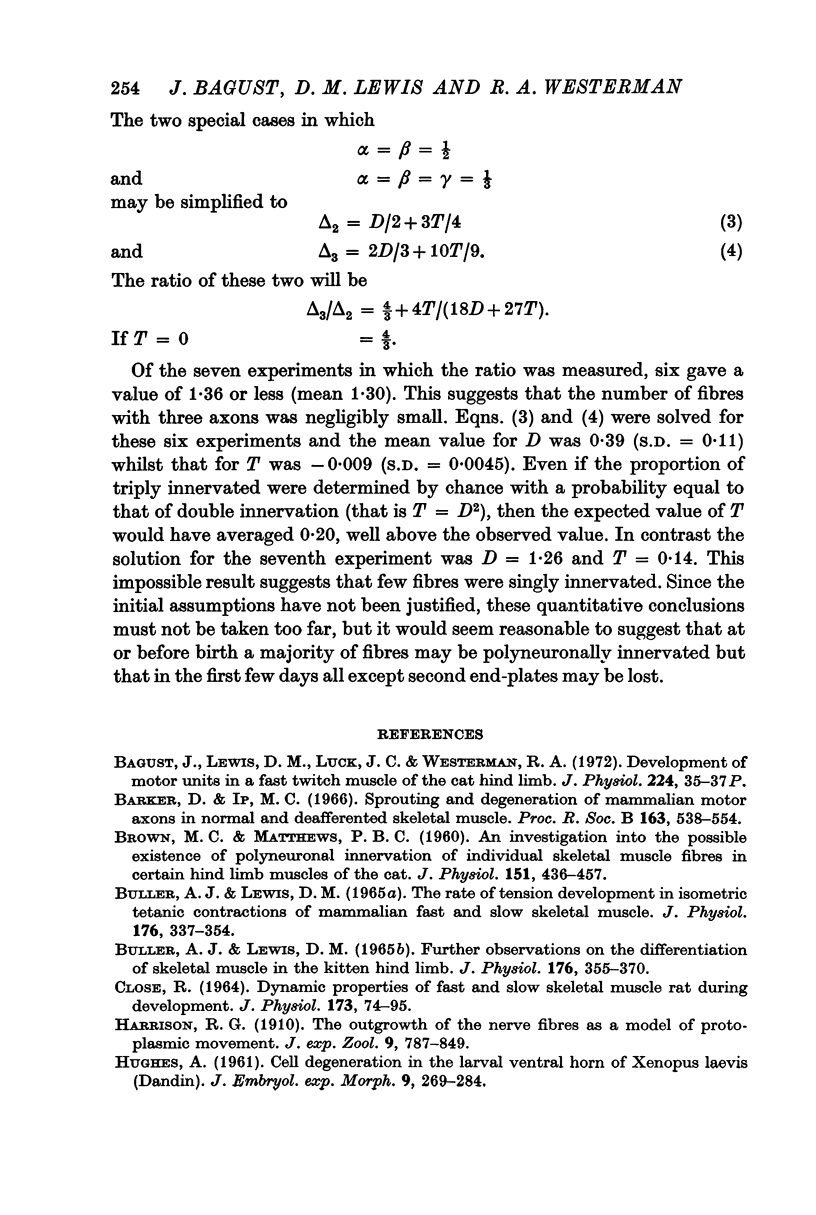
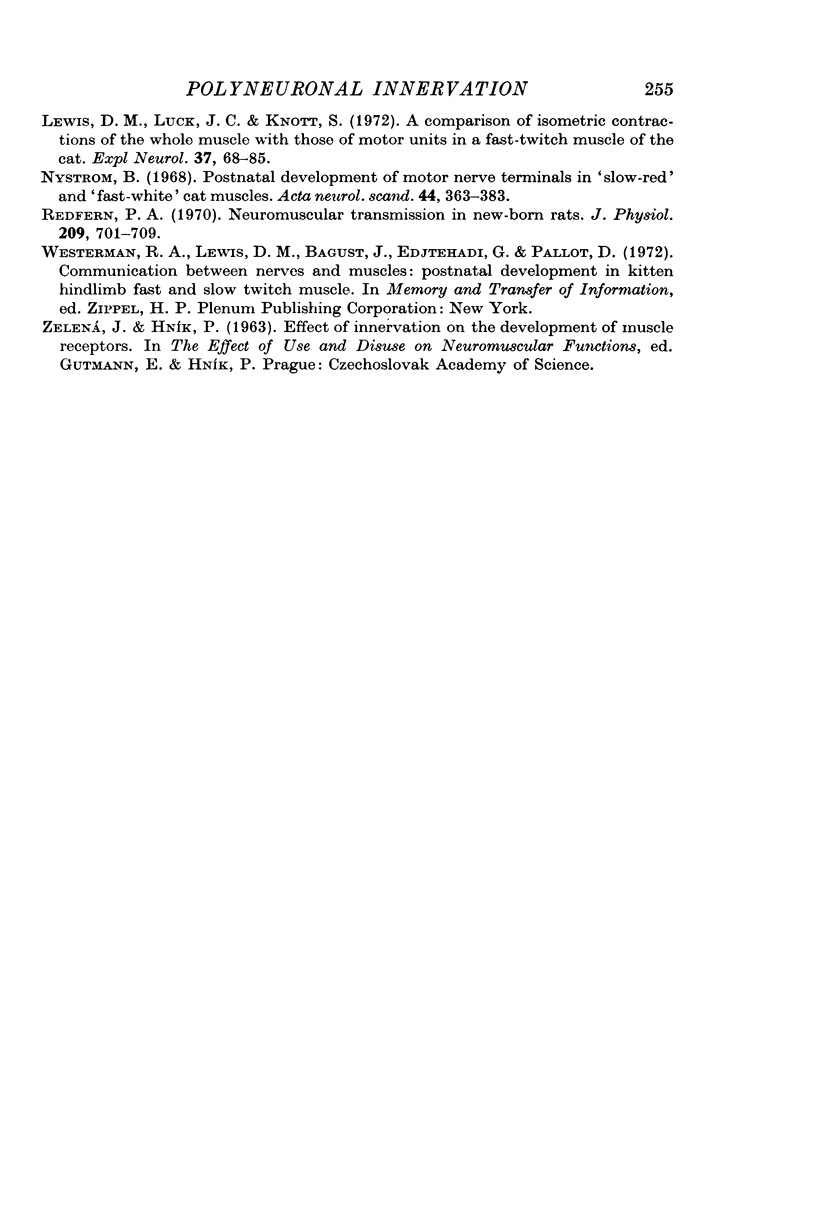
Selected References
These references are in PubMed. This may not be the complete list of references from this article.
- BROWN M. C., MATTHEWS P. B. An investigation into the possible existence of polyneuronal innervation of individual skeletal muscle fibres in certain hind-limb muscles of the cat. J Physiol. 1960 Jun;151:436–457. doi: 10.1113/jphysiol.1960.sp006450. [DOI] [PMC free article] [PubMed] [Google Scholar]
- BULLER A. J., LEWIS D. M. FURTHER OBSERVATIONS ON THE DIFFERENTIATION OF SKELETAL MUSCLES IN THE KITTEN HIND LIMB. J Physiol. 1965 Feb;176:355–370. doi: 10.1113/jphysiol.1965.sp007555. [DOI] [PMC free article] [PubMed] [Google Scholar]
- BULLER A. J., LEWIS D. M. THE RATE OF TENSION DEVELOPMENT IN ISOMETRIC TETANIC CONTRACTIONS OF MAMMALIAN FAST AND SLOW SKELETAL MUSCLE. J Physiol. 1965 Feb;176:337–354. doi: 10.1113/jphysiol.1965.sp007554. [DOI] [PMC free article] [PubMed] [Google Scholar]
- Bagust J., Lewis D. M., Luck J. C., Westerman R. A. Development of motor units in a fast twitch muscle of the cat hind limb. J Physiol. 1972 Jul;224(1):35P–37P. [PubMed] [Google Scholar]
- Barker D., Ip M. C. Sprouting and degeneration of mammalian motor axons in normal and de-afferentated skeletal muscle. Proc R Soc Lond B Biol Sci. 1966 Jan 18;163(993):538–554. doi: 10.1098/rspb.1966.0008. [DOI] [PubMed] [Google Scholar]
- CLOSE R. DYNAMIC PROPERTIES OF FAST AND SLOW SKELETAL MUSCLES OF THE RAT DURING DEVELOPMENT. J Physiol. 1964 Sep;173:74–95. doi: 10.1113/jphysiol.1964.sp007444. [DOI] [PMC free article] [PubMed] [Google Scholar]
- Lewis D. M., Luck J. C., Knott S. A comparison of isometric contractions of the whole muscle with those of motor units in a fast-twitch muscle of the cat. Exp Neurol. 1972 Oct;37(1):68–85. doi: 10.1016/0014-4886(72)90227-0. [DOI] [PubMed] [Google Scholar]
- Nyström B. Postnatal development of motor nerve terminals in "slow-red" and "fast-white" cat muscles. Acta Neurol Scand. 1968;44(3):363–383. doi: 10.1111/j.1600-0404.1968.tb05578.x. [DOI] [PubMed] [Google Scholar]
- Redfern P. A. Neuromuscular transmission in new-born rats. J Physiol. 1970 Aug;209(3):701–709. doi: 10.1113/jphysiol.1970.sp009187. [DOI] [PMC free article] [PubMed] [Google Scholar]


